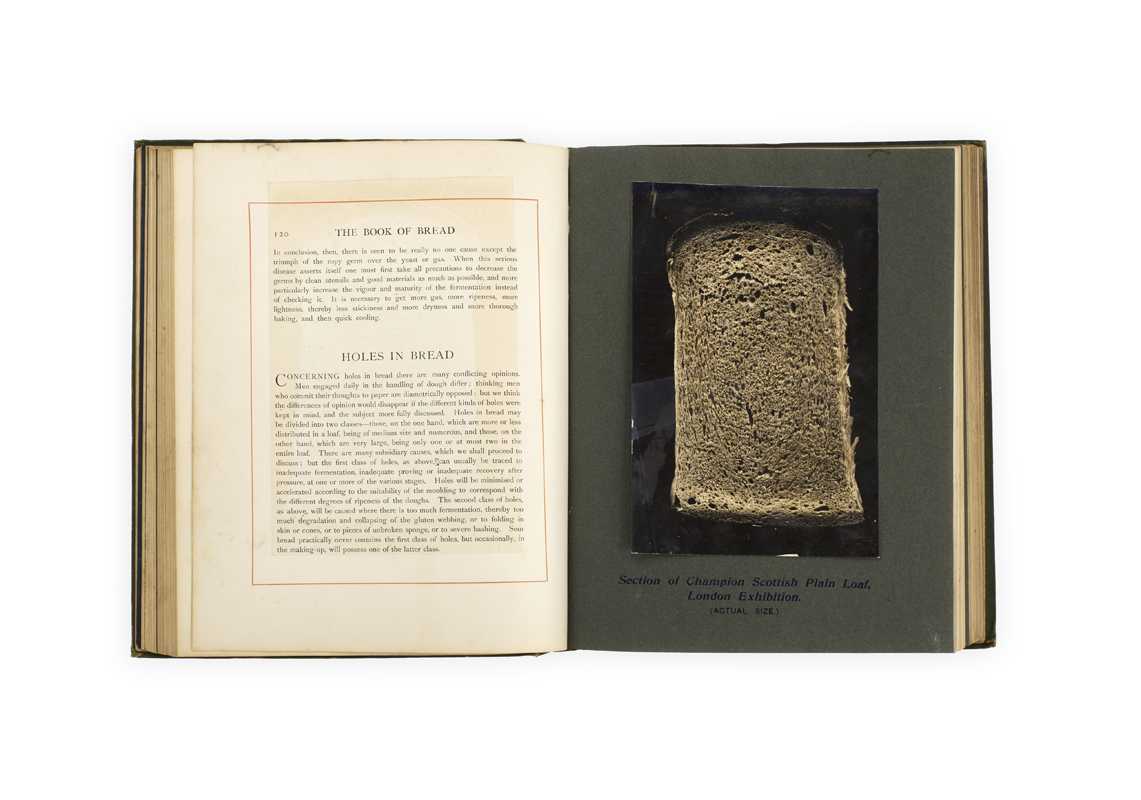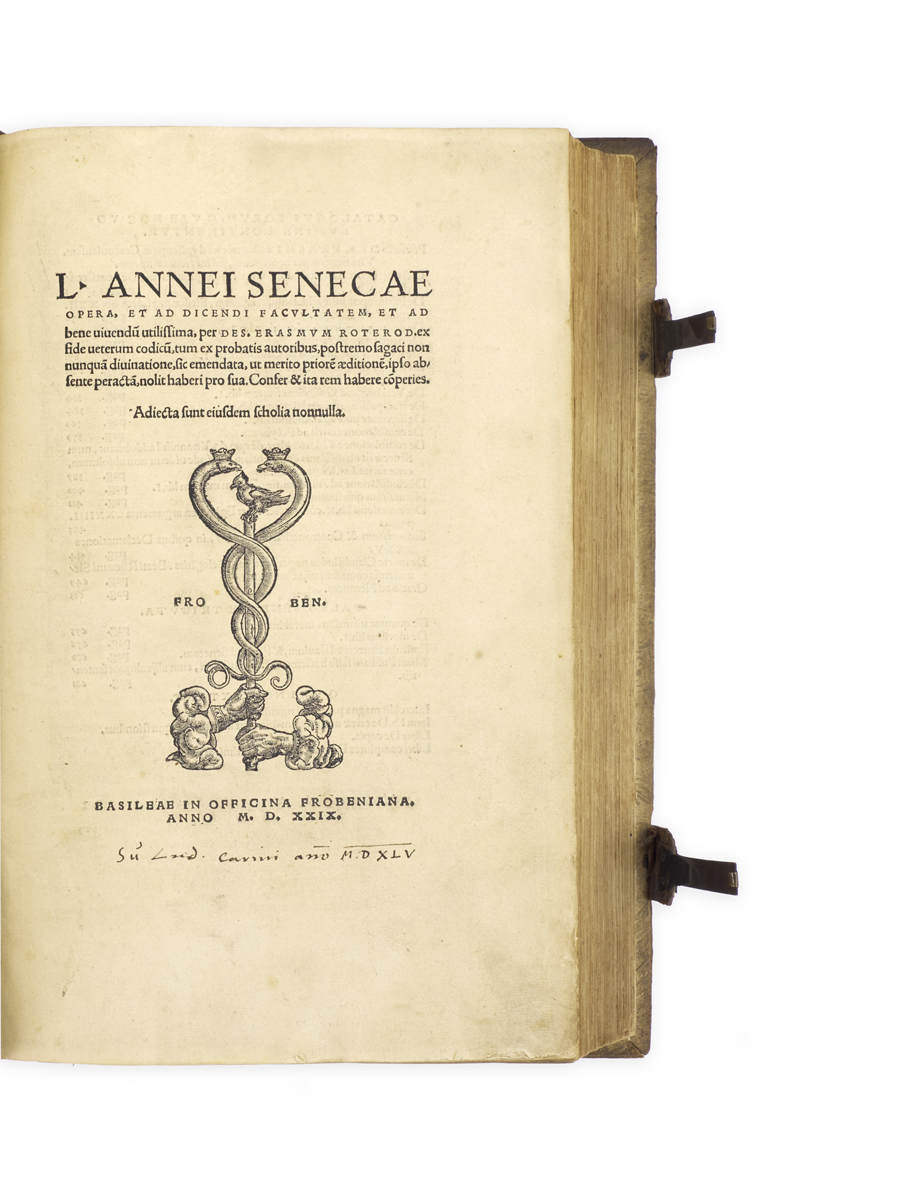
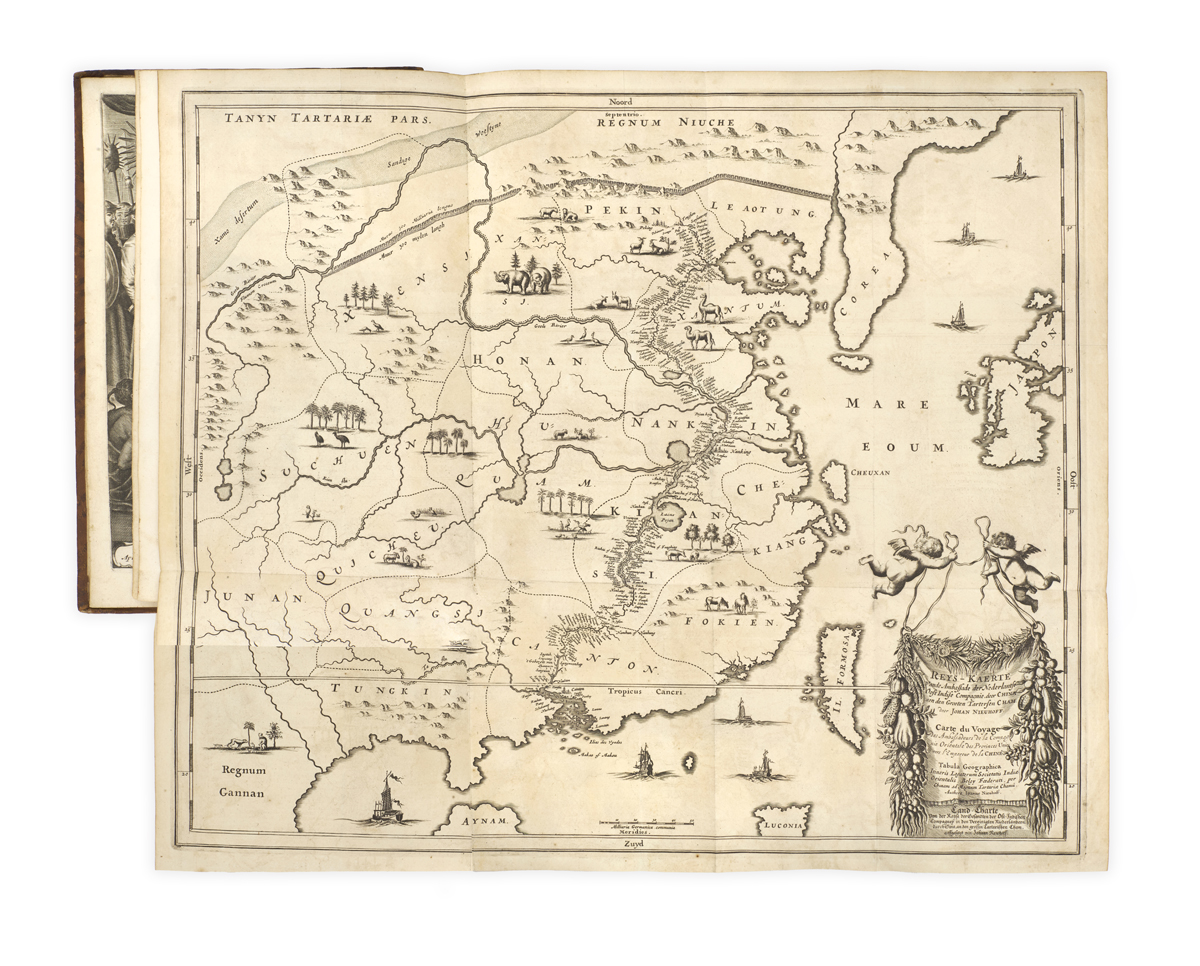
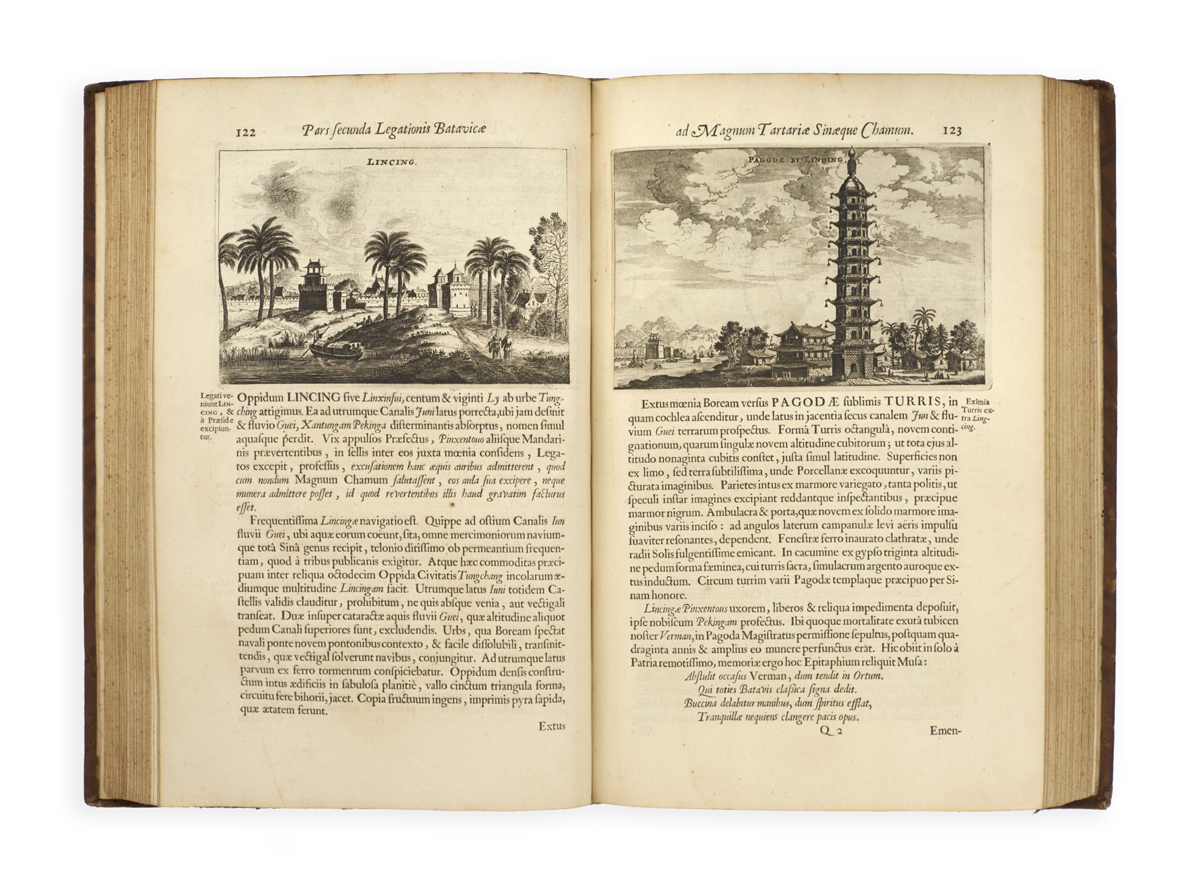

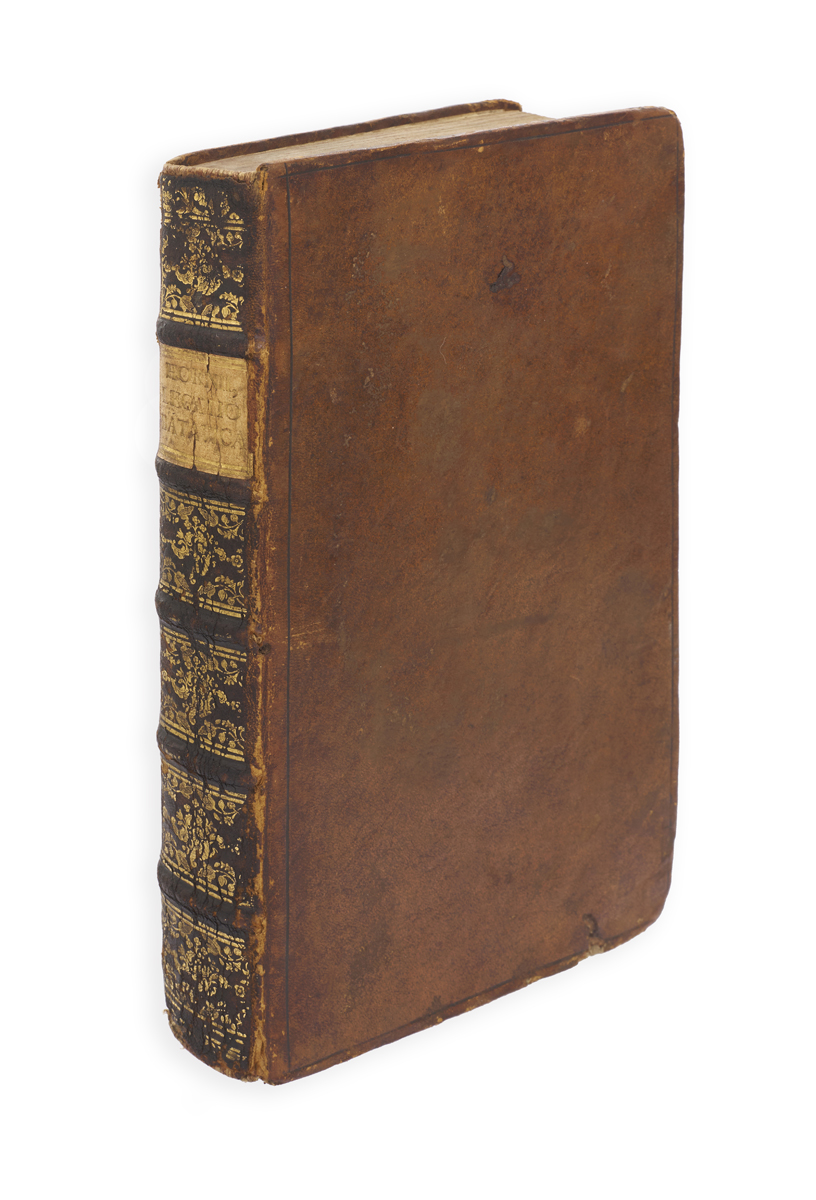
NIEUHOF’S JOURNEY TO A NEW COURT
WITH INFLUENTIAL ILLUSTRATIONS
NIEUHOF, Jan, and Georg HORN (translator).
Legatio Batavica ad magnum Tartariae chamum Sungteium, modernum Sinae imperatorem. Historiarum narratione, quae legatis in provinciis Quantung, Kiangsi, Nanking, Xantung, Peking, et aula imperatoria ab anno 1655 ad annum 1657 obtigerunt, ut et ardua Sinensium in bello Tartarico fortuna, provinciarum accurata geographia, urbium delineatione, nec non artis et naturae miraculis ex animalium, vegetabilium, mineralium genere per centum et quinquaginta aeneas figuras passim illustrata et conscripta vernacule …
Amsterdam, Jacob van Meurs, 1668.
Folio, pp. [4], 184, 172, [8 (index)], with author portrait (likely supplied from a smaller copy), engraved frontispiece, 35 double-page plates, and large folding map, without the dedication portrait of Colbert (as usual); copper-engraved vignette to title and 109 further engravings in text, woodcut initials; paperflaw to outer margin of m2 neatly repaired at time of binding, occasional light spotting and toning; very good in contemporary German sheep, spine richly gilt in compartments with gilt pink paper lettering-piece, edges speckled red; endcaps chipped, spine rubbed, some wear to corners and edges and abrasions to boards; upper pastedown with printed bequest label of Ernst Christian Jasche dated 1787, mid-nineteenth-century armorial bookplate of Nicholas Garry (partially obscuring an older bookplate beneath).

Added to your basket:
Legatio Batavica ad magnum Tartariae chamum Sungteium, modernum Sinae imperatorem. Historiarum narratione, quae legatis in provinciis Quantung, Kiangsi, Nanking, Xantung, Peking, et aula imperatoria ab anno 1655 ad annum 1657 obtigerunt, ut et ardua Sinensium in bello Tartarico fortuna, provinciarum accurata geographia, urbium delineatione, nec non artis et naturae miraculis ex animalium, vegetabilium, mineralium genere per centum et quinquaginta aeneas figuras passim illustrata et conscripta vernacule …
First edition in Latin, beautifully illustrated, of Nieuhof’s account of his travels in China between 1655 and 1657, one of the most important early modern non-Jesuit studies.
Following service in Brazil with the Dutch West India Company in the 1640s, Jan Nieuhof (1618–1672) joined the Dutch East India Company (or VOC) in 1650 and was stationed for several years in Batavia (Jakarta), where he was eventually appointed steward of the embassy in 1654. The following year he served on one of the embassies sent by the VOC to Peking (Beijing) with the intention of convincing the Qing emperor to open trade relations on the south coast following the VOC’s failed attempt to end the Portuguese monopoly on trade to Macao. Leaving Canton (Guangzhou), the embassy travelled northwards through Jiangxsi, Anhui, Jiangsu, and Hebei provinces, reaching Peking in July 1656 before embarking upon their return trip in October of the same year: in total, the journey stretched almost 1500 miles, and although unsuccessful in discussing trade arrangements with the emperor, they did gain permission to return to the court every eight years.
Nieuhof compiled his notes and sketches from the embassy into the present work, the first part describing his journey and the second containing a general description of the Chinese empire. Though prepared upon a brief visit home in 1658, it was not published until 1665; the first edition, in Dutch, was swiftly followed by translations into French (1665), German (1666), and English (1669). This Latin translation, published in 1668, was the work of the notable German biblical scholar, historian, and Adamite alchemist Georg Horn (1620–1670), who himself had a long-standing interest in China and particularly Chinese history (see Weststeijn, ‘Spinoza sinicus: An Asian Paragraph in the History of the Radical Enlightenment’ in Journal of the History of Ideas 68, no. 4 (2007), pp. 537-561).
The Latin edition (like the Dutch, French, and German versions) was published by Jacob van Meurs, noted as a publisher and engraver of heavily illustrated works, especially in the fields of geography and travel. Van Meurs commissioned almost 150 engravings after Nieuhof’s drawings, illustrating the work with images of Chinese people, customs and fashions, architecture and infrastructure, towns and landscapes, and flora and fauna. The illustrations have been credited with a significant influence on western depictions of China and on the development of a European taste for chinoiserie in the late seventeenth and eighteenth centuries (see Jing Sun, The Illusion of Verisimilitude: Johan Nieuhof’s Images of China (Leiden University, 2013)).
Cordier, Sinica, pp. 2346-7; Cox I, 325; Lowendahl I, 137; Lust, 534-539.
